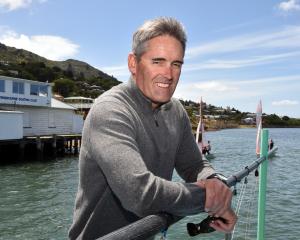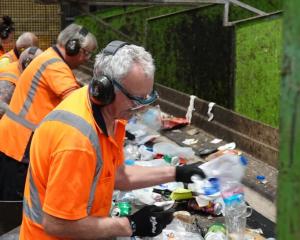By Susan Strongman of RNZ
An investigation into the death, two years ago today, of a New Zealand man in a Japanese psychiatric hospital has revealed inconsistencies in the medical documentation used to justify his extreme treatment.
Kelly Savage, a 27-year-old English language teacher from Wellington, was working in Japan when he was hospitalised on 30 April, 2017, during a psychotic episode.
At Yamato psychiatric hospital, a private facility near Yokohama, he was sedated, isolated, and tied to a bed by his wrists, waist and ankles for 10 days. But Kelly’s brother Patrick Savage said the restraints were unnecessary.
"He didn’t need to be tied to a bed, he was following orders, he certainly wasn’t going to hurt anyone," he said. "He was very sedated when I saw him, he was just lying on a bed with his mouth hanging open. He was having trouble speaking because he was so sedated. He wasn’t going anywhere.
"The director signed a form saying that he had to be restrained or else he was a danger to his own life, which I only found out about later on. But it was clearly not true and, in fact, the restraints were a danger to his life. It seems like that’s what caused his death," Patrick Savage said.

On 10 May, Kelly Savage’s heart stopped for 50 minutes, and he was rushed to a general hospital, where he died seven days later.
A cardiologist at the general hospital told the Savages that deep vein thrombosis (dvt) may have caused his death.
At least 10 deaths have been linked to restraint use in Japan since 2013. The practice in known to cause dvt, a condition that can be brought on by a lack of movement and can cause cardiac arrest.
In Japan, the practice of physical restraint in psychiatric hospitals is illegal unless a person is a risk to themselves or others. Yet the practice is common: More than 12,000 patients were tied down in psychiatric hospitals in 2017 alone.
The Savages suspect Yamato hospital manipulated Kelly's medical records to justify his continuous restraint.
Alongside nurses' notes describing Kelly as being sleepy, struggling to eat, or calm and cooperative, the same identically worded statement appears, saying Kelly is at risk of injury if he is not restrained.
At 8.28am on 8 May, staff observed the following: "Appearance at breakfast time with full assistance, ate two thirds. The patient occasionally choked on liquids but is able to eat if time is taken. When the staff speak to the patient, the patient communicates well and sometimes smiles. The patient wanted to try to brush their own teeth so the patient did it slowly with staff present. The patient said ‘Thank you again this morning’."
But just two minutes later, at 8.30am, the same statement seen in previous days’ notes appears: "In a state of psychomotor excitation, with significant restlessness, hyperactivity and explosiveness. There is sufficient risk of the patient being injured if not treated. The patient’s trunk and limbs are restrained."
Yokohama-based human rights rights lawyer Nobuo Sasaki said contradictory statements were evidence that someone in the hospital was lying.
But Yamato hospital’s director continues to deny any wrongdoing, and refuses to allow an independent investigation into the circumstances surrounding Kelly Savage’s death.
Both Yamato hospital and its lawyer refused to comment to RNZ.
In a 2015 report on mental healthcare in Japan, the OECD notes that restraint can be very stressful and traumatic for the patient, and can have a lasting impact on their confidence in medical staff.
Yet Toshio Hasegawa, a professor of occupational therapy at Kyorin University in Tokyo, has estimated that the median term of restraint in Japan is 19 days.
By comparison, patients in Switzerland are restrained for 48 hours; in Finland and Germany, the average time is 9.6 hours, and California’s average time is 4 hours. Professor Hasegawa’s research also found that the maximum time a person had spent in restraints in Japan was 1096 days, or three years.
Tamaki Saito, a professor of psychiatry at Tsukuba University, Japan, said the statistics were scandalous, and believes the number of people restrained can be reduced from more than 12,000 to fewer than 100 if patients are more carefully assessed upon admission to hospitals.
But he believes there is strong resistance to change from Japan’s psychiatric hospitals, 90 percent of which are private, as it will affect their bottom line. Keeping people restrained allows the hospitals to manage a high number of patients (whose stays are funded by universal health insurance) with a low number of staff, thereby saving money.
In Japan, private hospitals are represented by a powerful lobby group whose head, Dr Manabu Yamazaki, is said to be close friends with Prime Minister Shinzo Abe.
Martha Savage said Manabu Yamazaki had a picture of himself with Prime Minister Shinzo Abe on his Facebook profile.
"I can’t remember if they have their arms around each other or they’re just drinking together, but they look… they’re mates. There’s not good vibes there for us."
Martha Savage has travelled to Japan to campaign against the prolonged use of physical restraints in psychiatric hospitals twice since Kelly died. First to present a petition to Japan’s Ministry of Health, Labour and Welfare calling for a review of restraint use, and a second time to present an open letter addressed to Prime Minister Shinzo Abe, signed by 31 psychiatrists, calling for an international inquiry into the issue.
She said very little has been done by authorities since then, but she’ll continue to put pressure on the Japanese government to make the changes required to ensure no one else dies the way Kelly did.
"I’m basically just like the stereotypical mother whose child has died and they go out and they work for the cause to try to keep other people from doing the same thing. I just feel like I have to do this, I can’t let anybody else have to go through this."












